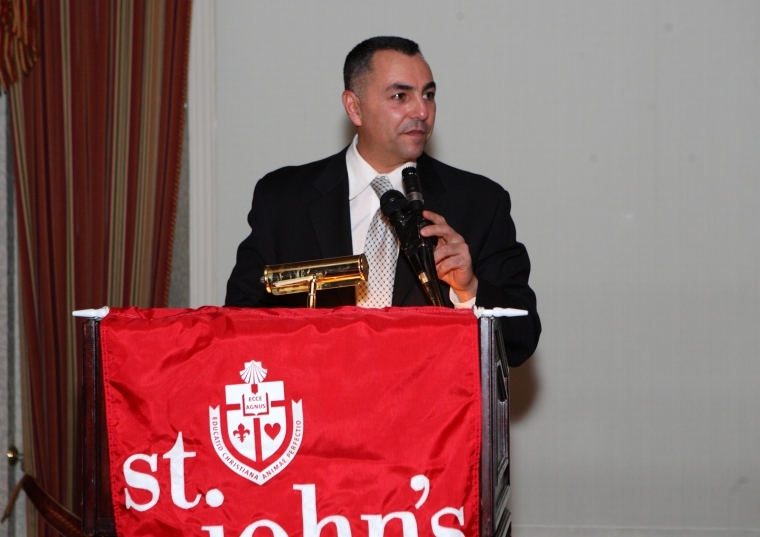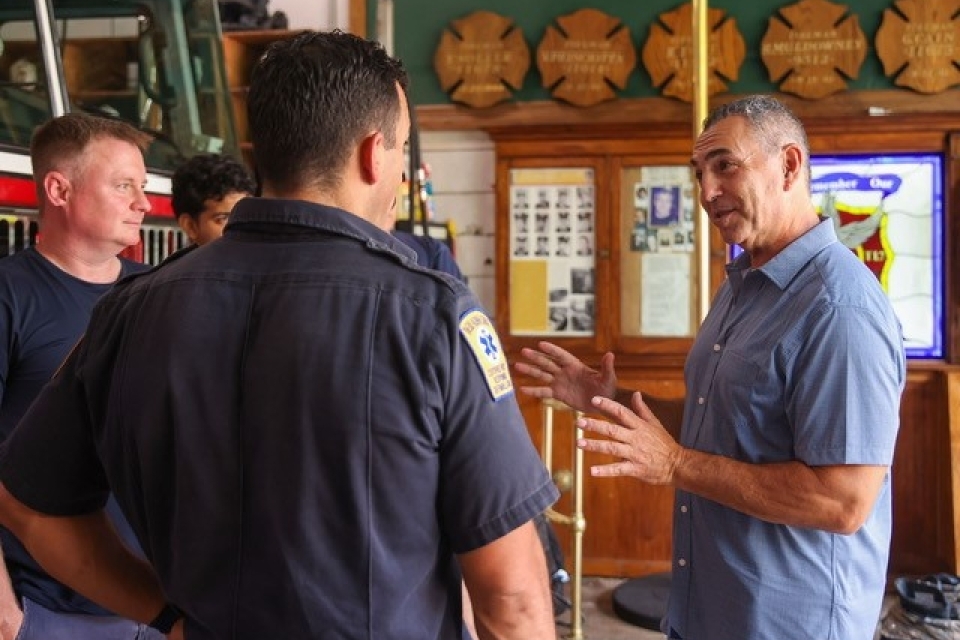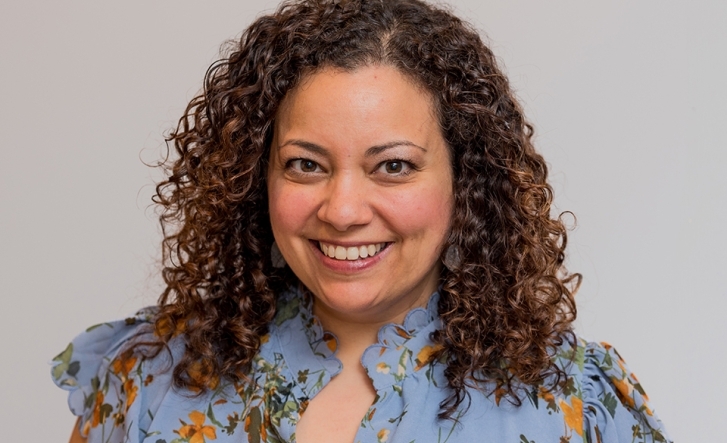New York Mets Hall of Famer Recalls Outstanding Career That Began at St. John’s
Brooklyn, NY, native John Franco grew up a rabid New York Mets fan. He was a standout pitcher at Lafayette High School, and later became one of St. John’s University’s star hurlers, helping lead them to the College World Series in 1980. After beginning his major league career with the Cincinnati Reds, he was traded to his hometown Mets late in 1989, and came full circle.

“We make a point of getting together once or twice a year to reminisce about St. John’s. The camaraderie we shared was the experience of a lifetime.”
For the next 15 years, several as Captain, he became an indispensable part of the team, helping lead them to the postseason twice. To this day, he remains one of the most beloved members of the franchise, and one of its most prominent ambassadors. Mr. Franco recently discussed his time at St. John’s and in the major league, where he became one of the preeminent relief pitchers of his day.
Mr. Franco’s father, Jim Franco Sr., was a Brooklyn Dodger fan who converted to a Mets fan when they entered the National League in 1962. Thanks to his father’s influence, Mr. Franco became a diehard baseball—and Mets—fan. “I was sort of born into it,” he recalled.
Throughout his Mets career, Mr. Franco wore an orange New York City Department of Sanitation shirt under his uniform to honor his father, who passed away suddenly in 1987. “It was a way to pay tribute to him for all the sacrifices, and the road trips, and everything he did to make me a better player,” he said.
In Little League, Mr. Franco played a variety of positions, including shortstop, first base, center field, and pitcher. “I loved to hit, and I loved to pitch,” he stressed. In high school, he began to realize his talent for the game might lead to a professional career.
Initially, Mr. Franco believed he would likely end up at Long Island University’s C.W. Post campus, but two future St. John’s teammates recommended him to the late Joe Russo, Head St. John’s Baseball Coach. “Coach Russo came to see me pitch an eight-inning 2–1 victory over one of the top high schools in New York City—and right after that he offered me a scholarship to St. John’s.”
Under Coach Russo, Mr. Franco said St. John’s Baseball was one of the powerhouses of the BIG EAST. “He gave me an opportunity to play NCAA Division I Baseball. We had some really good teams, and seven or eight guys were drafted.”
Mr. Franco had high praise for his pitching coach, the late Howie Gershberg. “When I got to St. John’s, I was just a thrower. Howie taught me how to pitch, how to think on the mound, how to physically and mentally prepare yourself for a game, and how to observe when you’re not playing. I owe a lot to Howie.”
During his major league career, Mr. Franco still relied on the mentorship of Coach Gershberg, who would hold at least three or four pitching sessions each winter with him. “If I had a bad outing, I would get a call from Howie, who had watched the game, and he would point out what I did wrong. He was a wonderful man and a wonderful human being who knew so much about pitching.”
While never coached by him, Mr. Franco enjoyed a warm relationship with Athletic Director and Head Baseball Coach John “Jack” Kaiser ’49C. “He was always supportive of baseball and all the sports, and always instrumental in getting us what we needed.”
Mr. Franco still enjoys strong friendships with several St. John’s teammates and recently had dinner with several of them. “We make a point of getting together once or twice a year to reminisce about St. John’s. The camaraderie we shared was the experience of a lifetime.”
Perhaps Mr. Franco’s most renowned teammate was Frank Viola, with whom he formed a potent one-two combination. “Frankie was a competitor. Between the two of us, I think we only lost six games in three years together. We were 1A and 1B, and anytime a team had to face us we had a good chance of winning.”
Mr. Franco recalled a doubleheader against Siena College in which he threw a no-hitter and Mr. Viola proceeded to pitch a one-hitter. In 1990, the pair came full circle after both were traded to the Mets. “It’s wild how things work,” Mr. Franco noted.
After three years at St. John’s, Mr. Franco was drafted by the Los Angeles Dodgers in 1981. In their minor league organization, he came under the tutelage of another Lafayette High School alumnus by the name of Sandy Koufax.
“Having the opportunity to pick his brain, listening to his thoughts and his process, is the kind of experience you can’t pay for,” he said. “It’s a privilege to be around a gentleman like that.”
Mr. Franco had similar words for Hall of Famer Tom Seaver. “Being around these successful Hall of Famers and Cy Young Award winners is something you can’t put a price on.”
The Dodgers traded Mr. Franco to the Reds in 1983, and he broke into the majors in 1984. There he was managed by all-time hits leader and perennial All-Star Pete Rose. “Pete had two rules: play hard and be on time. He was a great manager to play for.”
Mr. Franco enjoyed his time with the Reds, and was happy to begin his career outside of the intense scrutiny of the New York market. “It’s a great baseball town. I owe a lot to the Reds, and I owe a lot to the Dodgers for taking a chance on me and giving me the opportunity to play professional baseball.”
Late in 1989, Mr. Franco believed the Reds would offer to extend his contract, but then heard talk he might be traded to the Yankees. “During the winter meetings, I got a call from the Reds general manager that I was traded to New York, and I assumed it was the Yankees.” A short while later, Mr. Franco received a call from Mets General Manager Joe McIlvaine confirming it was the Mets.
“I grew up a Mets fan. My favorite team was the (World Championship) 1969 team, and I got to meet most of them while I was a Met. My dad used to take me and my brother to Bat Day, Banner Day, and Old-Timer’s Day. It was a dream come true to play for the team you grew up rooting for.”
Mr. Franco began his tenure with the Mets as the team’s closer, but eventually became their set-up man when they acquired Armando Benitez in 1999. While he embraced both roles, Mr. Franco confessed he preferred the role of closer.
“I didn’t mind being the set-up man, but I always treated the situation like I was the closer. I treated the eighth inning like it was the last inning of the game. But I loved being the closer, and working without a net. I loved being a relief pitcher because it was like being an everyday player.”
A four-time All-Star, Mr. Franco is fifth on the all-time major league saves list with 424, and has the most of any left-handed pitcher. He feels relief pitchers are often overlooked because the game has changed so much. “A lot of people don’t believe in the save statistic, but (relievers) play such an important role.”
One of Mr. Franco’s fondest memories of his time with the Mets was when former manager Bobby Valentine named him Team Captain, an honor usually accorded to a position player. “I think I had gained the respect of my teammates and the organization,” he recalled. While he took the role seriously, Mr. Franco didn’t flout his position. “I didn’t say to my teammates, ‘I’m the Captain and this is what you have to do.’ If a guy was having a bad day or a bad week, you’d talk to him and listen. Most times I had been there.”
In 2000, Mr. Franco helped lead the Mets to their first World Series since 1986 in which they played the crosstown rival New York Yankees. Dubbed the “Subway Series,” it remains a powerful memory for him, despite the team’s loss in five games. “It was great for the city. If we didn’t have interleague play, can you imagine how much more exciting it would’ve been?”
In the aftermath of the terrorist attacks of September 11, 2001, Mr. Franco made a point of doing whatever he could to ease the burdens of first responders and families who lost loved ones. He lost two friends who were New York City firefighters, one of whom was his son’s little league coach, as well as several friends who worked for Cantor Fitzgerald.
On September 21, 2001, 10 days after the terror attacks, the Mets played the Atlanta Braves and Mike Piazza hit a home run that ensured the Mets’ victory that night. “We weren’t even sure if playing the game was the right thing to do,” Mr. Franco recalled, but after receiving encouragement from elected officials, they went ahead.
“There wasn’t a dry eye in the house once Mike hit that home run. People were crying and cheering, laughing and smiling. The hair still stands up on my arm when I think about it. For those three hours, we put a small Band-Aid on a big wound. We gave the city something else to think about for a couple of hours.”
Shea Stadium served as a staging area for loading and unloading goods that were needed at Ground Zero, and Mr. Franco and his teammates would assist in that effort before games. “That was what made that team so special—not just what they did on the field, but off the field as well.”
After 15 years with the Mets, Mr. Franco spent a final season with the Houston Astros before retiring in 2005. He was elected to the Mets Hall of Fame in 2012, and still maintains a warm relationship with the organization and with St. John’s. On March 29, 2009, he threw out the ceremonial first pitch at the first baseball game ever played at Citi Field, a collegiate matchup between St. John’s and Georgetown University.
Recently, Mr. Franco recorded a video to help raise funds for St. John’s Men’s Basketball team and met new Head Coach Rick Pitino. “Hopefully Rick will get us back to the Promised Land that another Italian coach got us to before,” he laughed, adding that during the COVID-19 pandemic, former Head Coach Lou Carnesecca ’50C, ’60GEd, ’00HON called to ask how he was doing. “Here’s Coach on the other end checking up on me, and I was like, ‘You’re 90-something years old, I should be checking up on you! That’s the kind of guy he is.”
To this day, Mr. Franco loves being part of the Mets organization and is one of their most active alumni. “My goal is to do whatever I can to help the organization get to another World Series and win another championship for New York City.”






